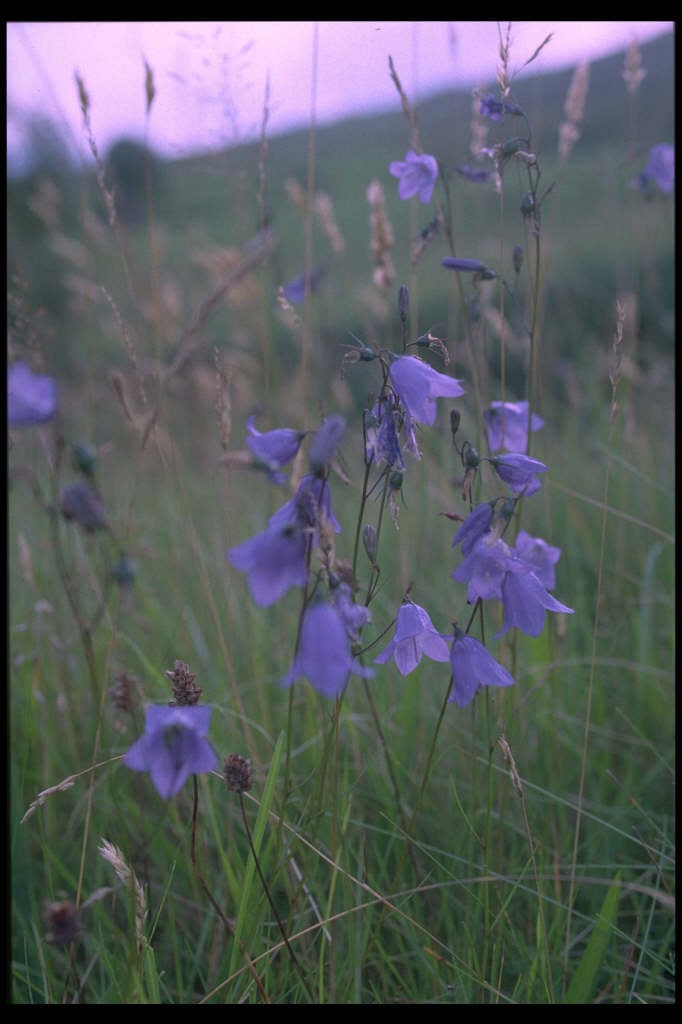Campanula rotundifolia
common harebell
A perennial to 30cm, forming a clump of small, rounded basal leaves, with slender, erect stems bearing narrower leaves and light blue, ball-shaped flowers 2cm long, in lax terminal panicles in summer
Other common names
blawortbluebell
see morecuckoo shoe
English harebell
harebell
heath bells
lady's thimble
old man's bell
Olympia bellflower
Scotch bluebell
Scottish bluebell
St George's cup
thimbles
wind bells
witches' bells
witches' thimbles
clychlys deilgrwn

Buy this plant
Size
Ultimate height
0.1–0.5 metresTime to ultimate height
2–5 yearsUltimate spread
0.1–0.5 metresGrowing conditions
Moisture
Moist but well–drainedpH
Acid, Alkaline, NeutralColour & scent
| Stem | Flower | Foliage | Fruit | |
| Spring | Green | |||
|---|---|---|---|---|
| Summer | Blue | Green | ||
| Autumn | ||||
| Winter |
Position
- Full sun
- Partial shade
Aspect
West–facing or East–facing or South–facing or North–facing
Exposure
Exposed or Sheltered Hardiness
H7Botanical details
- Family
- Campanulaceae
- Native to GB / Ireland
- Yes
- Foliage
- Deciduous
- Habit
- Clump forming
- Genus
Campanula may be annuals, herbaceous or evergreen perennials, with bell or star-shaped, often blue, flowers in late spring or summer
- Name status
Correct
- Plant range
- Temp. N. Hemis.
How to grow
Cultivation
Suitable for rock garden, sunny wall or bank.
Propagation
Propagate by seed, division or take basal cuttings
Suggested planting locations and garden types
- Cottage and informal garden
- Rock garden
- Patio and container plants
- Wildflower meadow
- Wildlife gardens
- Flower borders and beds
Pruning
No pruning required
Pests
Can be damaged by slugs, snails, glasshouse red spider mite and aphids
Diseases
May be infected by a rust, powdery mildews and a leaf spot
Love gardening
Sign up to receive regular gardening tips, inspiration, offers and more
View our Privacy Policy
Get involved
The Royal Horticultural Society is the UK’s leading gardening charity. We aim to enrich everyone’s life through plants, and make the UK a greener and more beautiful place.